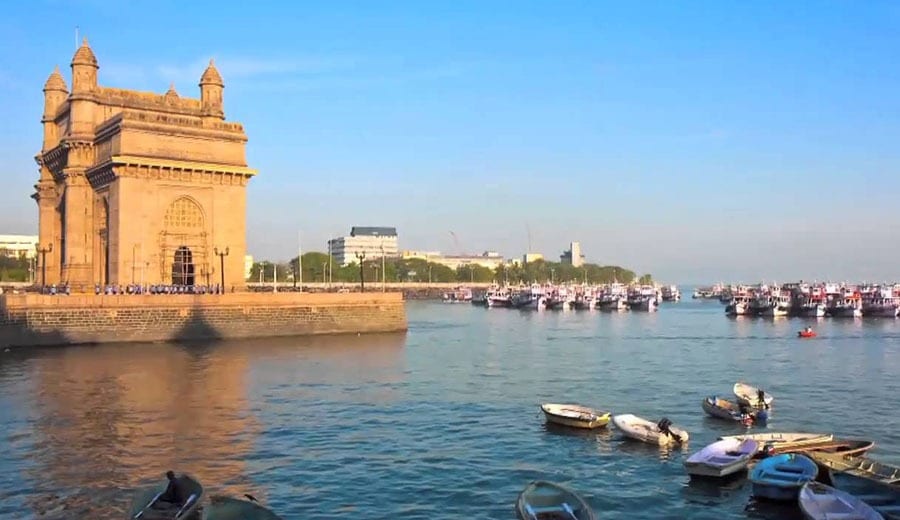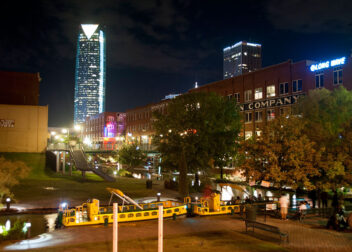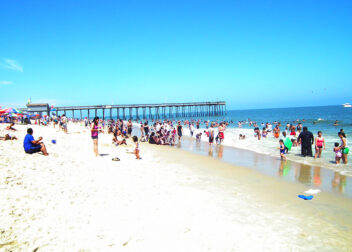Gateway of India
The Gateway of India is a monument located in Mumbai, India. It was built to commemorate the visit of King George V and Queen Mary to Mumbai (then Bombay) in 1911. The Gateway is a basalt arch monument with a height of 26m, located on the waterfront in the Apollo Bunder area, overlooking the Arabian Sea. It is considered a symbol of Mumbai and a popular tourist destination, with boat tours to the nearby Elephanta Caves departing from the Gateway.
History Gateway of India
The Gateway of India was built in 1911 to commemorate the visit of King George V and Queen Mary to Bombay (now Mumbai). The monument was designed by British architect George Wittet and was completed in 1924. The Gateway served as a symbol of British colonial rule in India and was used as a ceremonial entrance for important dignitaries visiting the city.
After India gained independence from Britain in 1947, the Gateway continued to be an important symbol of the country’s history and a popular tourist destination. In 1948, the last British troops left India through the Gateway, marking the end of British colonial rule. Today, the Gateway remains a popular attraction in Mumbai and is considered a symbol of the city’s rich history and cultural heritage.
Architecture
The Gateway of India is an Indo-Saracenic style monument, blending elements of Hindu and Muslim architecture. It features a large archway made of yellow basalt stone, with a height of 26m and a width of 21m. The arch is topped with a balcony and a central dome, surrounded by smaller domes and minarets. The monument is decorated with intricate carvings and lattice work, and features a mix of Hindu and Islamic architectural elements, such as Hindu-style domes and Islamic-style arches.
The structure stands on a platform near the waterfront, with steps leading down to the water’s edge. The Gateway is surrounded by spacious grounds and is a popular gathering place for tourists and locals. The area around the Gateway has been developed into a tourist destination, with many shops, restaurants, and hotels in the vicinity.
Nearby Attractions
There are several tourist attractions near the Gateway of India in Mumbai, India:
- Taj Mahal Palace Hotel: A historic luxury hotel located a short walk from the Gateway.
- Elephanta Caves: A UNESCO World Heritage site featuring rock-cut temples on an island in the Mumbai Harbor.
- Chhatrapati Shivaji Terminus: A historic railway station and former headquarters of the Great Indian Peninsula Railway Company.
- Marine Drive: A popular promenade with a scenic view of the Arabian Sea.
- Colaba Causeway: A bustling shopping street known for street food, clothing, and accessories.
- Prince of Wales Museum: A museum featuring exhibits on the history and culture of Maharashtra and the wider Indian subcontinent.
- Haji Ali Dargah: A mosque and tomb of a Sufi saint, located on an islet off the coast of Mumbai.
- Mumbai Harbour: A major port and home to several tourist attractions, including the Mumbai Port Trust Garden, the Central Warehouse, and the Mumbai Ferry Wharf.
Facts
Here are some interesting facts about the Gateway of India in Mumbai, India:
- The Gateway of India was built to commemorate the visit of King George V and Queen Mary to Bombay (now Mumbai) in 1911.
- The monument was designed by British architect George Wittet and completed in 1924.
- The Gateway is a symbol of British colonial rule in India and served as a ceremonial entrance for important dignitaries visiting the city.
- The Gateway of India is an Indo-Saracenic style monument, blending elements of Hindu and Muslim architecture.
- The monument is made of yellow basalt stone and stands 26m tall.
- The Gateway was the departure point for the British troops leaving India after independence in 1947.
- The Gateway is a popular tourist destination in Mumbai, attracting millions of visitors each year.
- Boat tours to the nearby Elephanta Caves depart from the Gateway.
- The Gateway is surrounded by shops, restaurants, and hotels, making it a popular gathering place for tourists and locals.
- The Gateway of India is considered a symbol of Mumbai’s rich history and cultural heritage.
How to reach
The Gateway of India is located in Mumbai, India, and can be reached by several modes of transportation:
- By Rail: The nearest railway station is Chhatrapati Shivaji Terminus (CSMT), which is located about 2 km from the Gateway. From there, you can take a taxi or an auto-rickshaw to the Gateway.
- By Bus: Mumbai has an extensive network of local buses that can take you to the Gateway. The nearest bus stop is Colaba, which is a 5-minute walk from the Gateway.
- By Car: You can drive to the Gateway and park in one of the several paid parking lots in the area.
- By Boat: You can also reach the Gateway by taking a ferry from the Mumbai Harbour to the Gateway’s jetty.
Regardless of the mode of transportation, the Gateway of India is easily accessible and well-connected to other parts of the city.
Best time to visit
The best time to visit the Gateway of India in Mumbai, India depends on personal preferences and travel plans, but here are some factors to consider:
- Weather: Mumbai has a tropical climate, with high humidity and temperatures that can reach up to 35°C (95°F) during the summer months. The monsoon season, from June to September, can bring heavy rainfall and flooding to the city. Winter months, from November to February, are the best time to visit for cooler and drier weather.
- Crowds: The Gateway is a popular tourist destination and can get crowded, especially during peak tourist season from October to March. If you prefer to avoid crowds, consider visiting during the summer months.
- Festivals: Mumbai is known for its vibrant cultural scene, and there are several festivals and events throughout the year. Holi, Diwali, and Ganesh Chaturthi are among the most popular festivals and are celebrated with great enthusiasm in Mumbai.
In general, the best time to visit the Gateway of India would be during the winter months, when the weather is pleasant and crowds are manageable. However, it’s worth checking the schedule of any festivals or events that you may be interested in, as they can impact your experience of the city and the Gateway.



